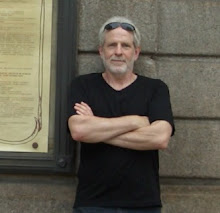The Drake Passage around Cape Horn, the direct North Face route up Everest, El Camino del Muerte (the Death Road) in Bolivia - all of these legendary paths are fraught with peril and require consummate skills and iron nerves to navigate. But none has ever aroused the level of sheer dread or demanded the degree of reckless bravado as this crosswalk in Brookline, Mass.
Don't let the benign residential surroundings fool you. Hardened explorers and fortune hunters alike would rather circumnavigate the globe eastward than risk their lives in a foolhardy attempt to reach the west side of St. Paul Street directly. Even the riches of Coolidge Corner with its multiple cell phone dealers and chain drugstores would not be worth the danger involved.
It wasn't always this way. There was a time when young children were not afraid to approach this intersection, when the elderly and infirm made their way to the opposite sidewalk without a care. What insidious transformation turned an innocuous crosswalk into a horrifying gauntlet of doom?
It was, my friends, the well-intentioned addition of this sign.
Prior to its installation, there was a tacit understanding between drivers and pedestrians" "I won't stop, so don't cross if you're within range." Even if a vehicle could only intercept you by travelling at Mach one, stay put. "All clear" meant all clear a mile or so in either direction. I'm told that in Canada, cars are required to stop for anyone in a crosswalk regardless of circumstances or signage. Such a person wouldn't last a half-hour in Massachusetts.
Boston drivers are reputed to be the worst in the world and I'm inclined to agree. New York City drivers are more cutthroat, but at least they're predictable in their ferocity. Italian drivers are lunatic daredevils with no regard for traffic legality, but are skilled enough to get away with it. Boston drivers are both feral and capricious; there is no method, only madness. From the time a child in these parts can tie his own shoe, he understands this instinctively, and acts accordingly.
The addition of these signs in local crosswalks has ruptured this delicate equilibrium. No longer is crossing the street a strictly Darwinian skirmish, but an odd experiment in Newton's laws of mass and acceleration as modified by local legislative and judicial fiat and open to interpretation by every jerk in a Subaru Outback who's yakking on his Blackberry.
Where once there was certainty, there is now paralyzing indecision and not only on the part of the pedestrian. This sign is less a traffic directive than a reject puzzle from the old quiz show, Concentration. The last thing a person piloting a quarter-ton of metal should have to worry about is solving a rebus.
The first challenge facing the approaching vehicle is to actually see the word "YIELD" embedded in the inverse red triangle of its corresponding highway sign. The Traffic department has apparently gone to great lengths to make the word as small and indistinct as possible. And as hard as it is to read, it is equally hard to define. Technically, "yield" means giving the right of way to other traffic. If you can avoid the crosser by cutting harmlessly behind him by a few microns, you've technically "yielded." Wouldn't "STOP" be more appropriate?
And the walker icon is even more ambiguous. It's either a plump elderly man with osteoporosis and his pants pulled too high or a mime in a beret doing that "walking against the wind" routine they're so fond of. He (or she) does seem to be in motion which means anyone just standing tentatively off the curb is not covered by the "YIELD" order, so feel free to hit the gas and continue on your way.
As for the "within crosswalk" addendum, does that imply that if you step beyond the actual dotted lines, you're toast?
My anecdotal experience is that the majority of drivers pay no attention to the sign unless annihilation is a certainty. If you can bob and weave your way around a crosser, the onus is on him to get out of your way. In other words, there's little difference between traffic behavior before or after the sign's deployment.
The crosser, however, is now always in doubt as to whether a driver will respect or even understand the sign. Occasionally, a car will slow down to read it, giving the pedestrian the false impression that it's safe to cross. Having disdained the sign as another unwarranted governmental intrusion into the life of its citizens, the driver speeds up, forcing the crosser to fly across the street in blind panic. In response, the driver slams on the brakes to avoid a potential collision and spills his four-dollar Venti Caramel Macchiato all over his pants. What usually follow is a vehicular Alphonse and Gaston routine with upraised fingers and horns taking the place of exaggerated courtesy.
Please, Brookline Traffic Department, get rid of these signs before someone gets hurt.


